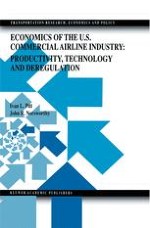Economics of the U.S. Commercial Airline Industry: Productivity, Technology and Deregulation illustrates the impact of upstream technological change in capital goods (aircraft and aircraft engines) on demand, productivity, and cost reduction in the U.S. airline industry for the years 1970-1992. The aim is to separate supply-side technology push from demand pull in determining investment in aircraft in the US airline industry. The focus of inquiry in this study is at the company level, so the measures are sensitive to company differences such as financial costs, payload, and existing aircraft inventory rather than industry averages. This monograph builds on the new developments in econometric modeling and has a substantial technical component. The quantitative results lead to implications for understanding technology and its impact on the airline industry, as well as for formulating regulatory policy.
